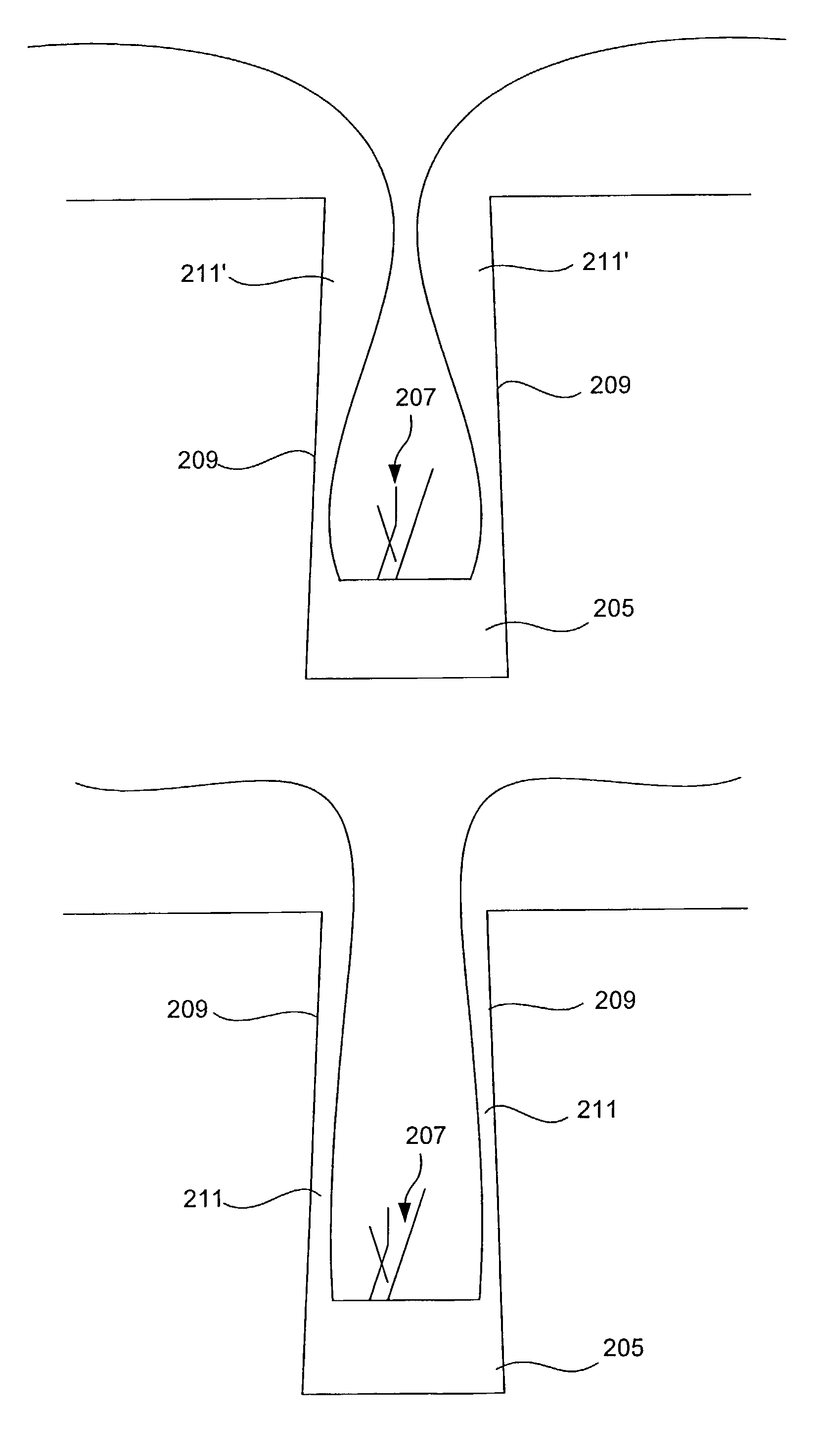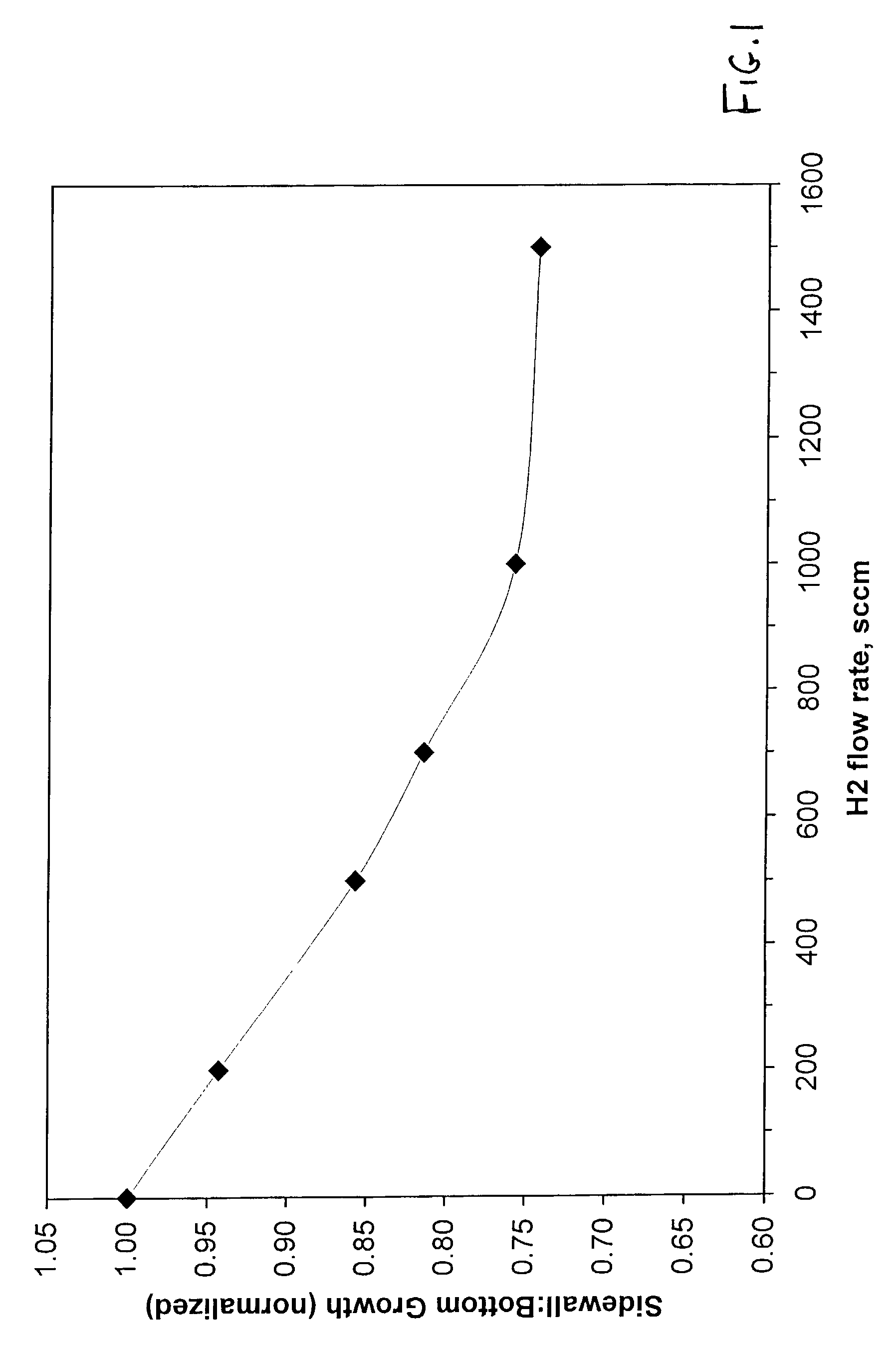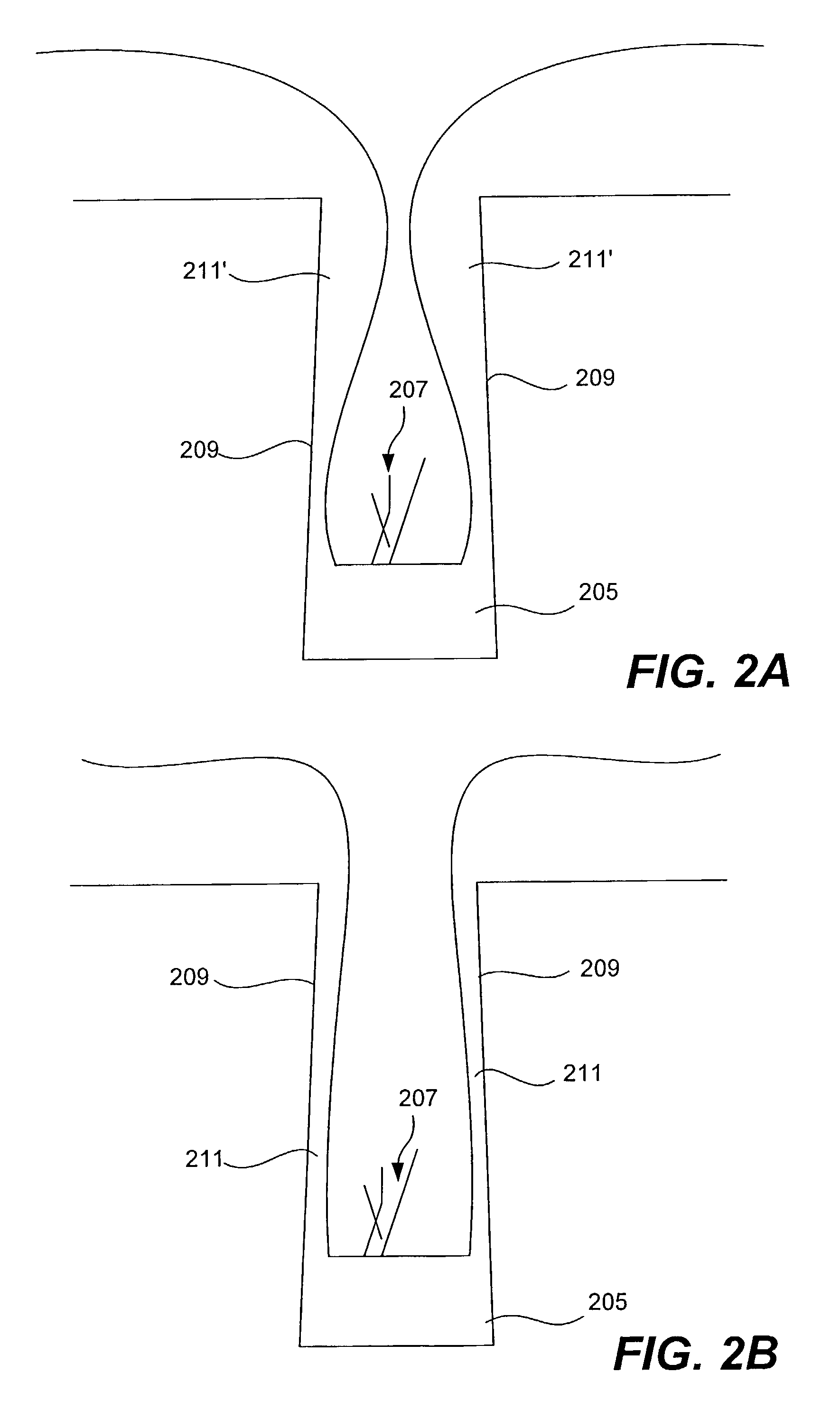Hydrogen-based phosphosilicate glass process for gap fill of high aspect ratio structures
a phosphosilicate glass and hydrophobic technology, applied in the direction of basic electric elements, semiconductor/solid-state device manufacturing, electric apparatus, etc., can solve the problems of reducing budgets, void-free filling of high aspect ratio spaces (e.g., ar>3:1) becomes increasingly difficult, and the top part of a high aspect ratio structure sometimes closes, etc., to achieve reduced side-wall dielectric redeposition, enhanced mobility of the dielectric, and reduced red
- Summary
- Abstract
- Description
- Claims
- Application Information
AI Technical Summary
Benefits of technology
Problems solved by technology
Method used
Image
Examples
example 1
[0077]FIG. 5 shows FTIR absorbance spectra for dielectric films deposited by a standard PSG HDP CVD process (502) and a hydrogen containing PSG process using 200, 500 and 1000 sccm H2 (504, 506 and 508, respectively). Importantly, all of the curves have peaks with almost identical spectral locations and magnitudes. This result indicates that the dielectric formed by a hydrogen-based PSG process in accordance with the present invention has acceptable optical properties relative to the standard PSG dielectric. Also, note that there are no peaks associated with Si—H, H2O, or SiO—H. Each of these detrimental species could potentially form when hydrogen is present. The films were deposited using the following conditions:
[0078]
Standard PSG ProcessSiH492 sccmO2235 sccmPH348 sccmH20 sccmHe100 sccmLF Power3750 WattsHF Power2250 Watts
[0079]
H-Based PSG ProcessSiH430 sccmO265 sccmPH38 sccmH2200, 500, 1000 sccm, respectivelyHe0 sccmLF Power4000 WattsHF Power1300 Watts
example 2
[0080]FIG. 6 shows a bar graph representing the maximum aspect ratio capable of void free fill with and without hydrogen in a PSG process gas. The HPD CVD conditions used were the same as those noted above in connection with FIG. 5 (for the H-based process, 1000 sccm H was used). The bar on the left represents the achievable aspect ratio fill for the standard PSG process without hydrogen. The bar on the right represents the achievable aspect ratio fill for the H-based PSG process. The results show that a substantial increase in the aspect ratio that may be filled with a PSG process gas is achieved by using an H-based PSG process in accordance with the present invention.
PUM
 Login to View More
Login to View More Abstract
Description
Claims
Application Information
 Login to View More
Login to View More - R&D
- Intellectual Property
- Life Sciences
- Materials
- Tech Scout
- Unparalleled Data Quality
- Higher Quality Content
- 60% Fewer Hallucinations
Browse by: Latest US Patents, China's latest patents, Technical Efficacy Thesaurus, Application Domain, Technology Topic, Popular Technical Reports.
© 2025 PatSnap. All rights reserved.Legal|Privacy policy|Modern Slavery Act Transparency Statement|Sitemap|About US| Contact US: help@patsnap.com



